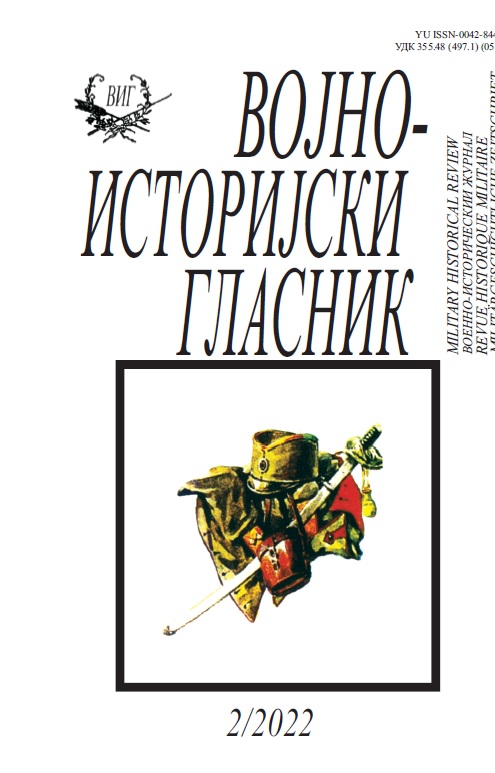УМРЛИ ОД ТИФУСА 1915. ГОДИНЕ У ПАРОХИЈАМА ЦРКАВА У ДРАЧИЋУ И КОСЈЕРИЋУ – ПРИЛОГ ДЕМОГРАФСКОЈ АНАЛИЗИ РАТНИХ ЖРТАВА
DIЕD FROM TYPHUS IN 1915 IN THE PAROCHIAL TERRITORIES OF THE DRAČIĆ AND KOSJERIĆ CHURCHES: PAPER ON DEMOGRAPHIC ANALYSIS OF WAR VICTIMS
Author(s): Vladimir KrivošejevSubject(s): History, Social Sciences, Sociology, Military history, Recent History (1900 till today), Demography and human biology, Pre-WW I & WW I (1900 -1919)
Published by: Institut za strategijska istraživanja
Keywords: First World War; epidemics; typhus; 1915; Valjevo; Užice; Dračić; Kosjerić
Summary/Abstract: Although more than a century has passed, many questions have been unanswered, and the most important of them are related to a total number of war victims, as well as the shares of the murdered on the battlefield and dead from the consequences of various, big and small epidemics, including large typhus epidemic in 1915. In this paper, a general synthesis of epidemic situation during the war in Serbia has been presented, as well as the results of the specific research related to mortality changing according to years in various villages of the Valjevo and Užice area done by analysis of records in registry books and church death registry books. This research has shown that mortality was much bigger (about three times) than average mortality in previous years, approximately depending on village, 75%–85% of the dead passed away during the first half of the year, during the typhus epidemic. In addition, profound research of the mortality in the parishes of the churches in Dračić and Kosjerić showed that 5760 inhabitants lived in 12 villages according to the census from 1910. During the four‐year period, from 1912 to 1915 (those were the years of the Balkan wars and the first two years of the World War I ending in the year when great typhus epidemic developed) deaths of 1090 parishioners were registered and that was 18.92% of the population registered in 1910. The main cause of the deaths was various diseases, although in 1914 there were many war actions, and in the death records only 11 direct war victims were registered. The greatest mortality rate was noted in the ”typhus year”, in 1915, when the informal armistice lasted most of the year. Out of 600 deceased, 477 died during the first half of the year. Typhus was noted as a cause of the death for 338 of the deceased, and it presented 31% of all the records during those four years, and 5.87% out of the inhabitants recorded in 1910. Regarding sex and age structure of the typhus victims during the epidemics, out of 338 deceased a bigger mortality rate of men was noted (185–54.73%) than women, and a much bigger mortality rate of the persons over 40 (219– 4.79%) than younger persons
Journal: Vojnoistorijski glasnik
- Issue Year: 2022
- Issue No: 2
- Page Range: 102-118
- Page Count: 17
- Language: Serbian

